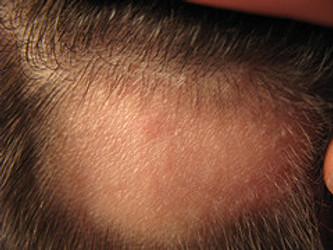HAIR LOSS DUE TO TELOGEN EFFLUVIUM
Posted by Manny Y on 7th Apr 2015
While androgenetic alopecia or male/female pattern hair loss affects all most of all the elderly people worldwide. There are other causes of hair loss which aren’tgenetically driven, meaning these types of hair loss are triggered by other factors.One common cause of hair loss is telogen effluvium. This is a condition where all hair suddenly enters the telogen phase.Typically, there are 3 phases in the hair growth cycle, these are:Anagen phase is the phase where active hair growth occurs. This the time where the roots of the hair follicles rapidly grow producing more hair, adding about One centimeter of hair each month. This phase last from 2 to 7 years.Catagen phase is a very short phase that last about 1 to 2 weeks.

There isn’t anymore cellular activity in this phase and the hair follicles shrink. This serves as a transition between anagen and telogen phase. Telogen phase is the phase of active hair fall and last about 5 to 6 weeks.
What occurs here is the bottom portion of the hair shaft detaches itself. Hair fall occurs either when new hair growth occurs and pushing the old hair shaft or pulled off by combing or brushing. In telogen effluvium about 70% of hair enters the telogen phase
regardless of what phase they are in and this cause’s massive hair loss in just a short time.What causes this type of hair loss?
In factthere are several conditions like extreme dieting, post partum hair loss, severe stress, malnutrition, anemia and many others. This hair loss condition is probably 2ndto androgenetic alopecia.
Fortunately, telogen effluvium is a temporary type of hair loss, as long as the stressor is under control or a dreadful event has passed. The hair follicles can pick up again and function properly again. In just a few weeks hair will eventually grow back again even without a hair loss treatment.

